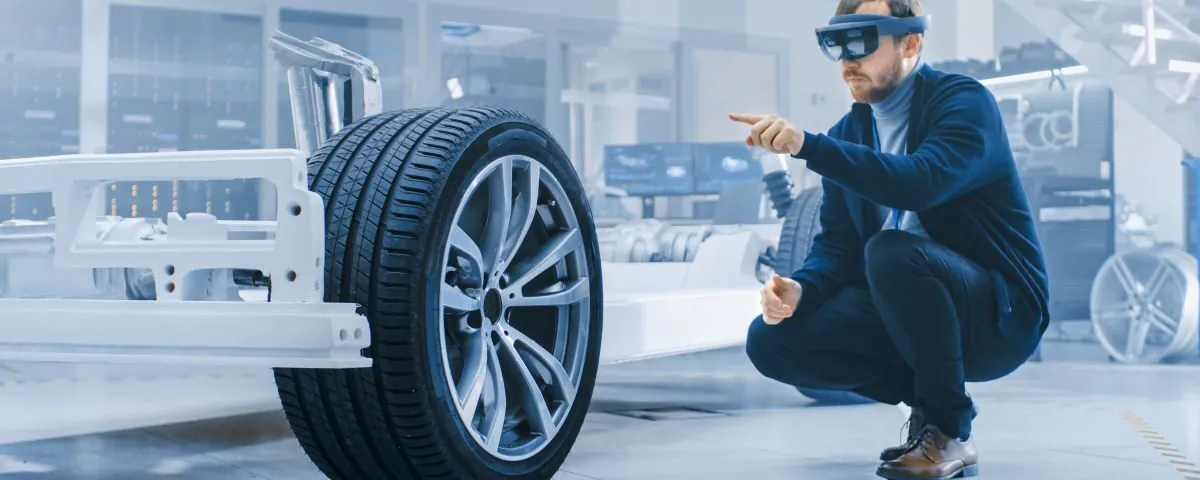Innovation Consulting
You need a crystal clear Strategy for tomorrows Products, Services & Business?

Innovation arises from business decisions and is not a coincidence. It is not random trends or sudden ideas that lead to market success, but a well thought-out innovation strategy that has been approved by the company management.
Innovation is a tool to achieve growth goals. To do this, companies need to focus on a few opportunities. It is crititcally important to avoid waste and to conserve resources. Otherwise, you will run out of resources and motivation halfway to the finish line. And immediately, the term ‘innovation’ will be burnt. No one wants to hear it again for a few years. How this can be solved is shown by the implementation of an Innovation BaseCamp at a leading medium-sized machine building company in the automotive sector:
The head of research & development of a hidden champion is familiar with alloys, materials and electrical engineering. He knows innovation as technical, evolutionary new developments that are thought up by the company’s engineers. Without the customer, however. And, he’s not yet following a clear innovation strategy. This will be the first step to drive innovation in a new way. It is necessary because the company stands for innovation as well as tradition. “The company was innovative,” says the owner, proud and cynical at the same time. He talks about the founding fathers and the major changes in the company to this day. The original competitive advantage was so great that the company has been the market leader ever since. For 80 years it has done one thing above all else: Grow.
As a supplier to the automotive industry, the family-owned company is feeling the effects of the crisis in the automotive sector: Stagnation. This is an equally new experience for employees and management. Yes, there was a slump during the 2009 financial crisis, but the market recovered quickly. Today, however, things look different. For the first time, the future is really uncertain.
You need a crystal clear Strategy for tomorrows Products, Services & Business?
Due to the continuous growth of the last few years, the company is primarily geared towards efficiency. In thinking and in acting. Next to day-to-day business, employees have little time for real innovation. And they don’t know why it would even be relevant. The salespeople served loads of interested customers to whom they distributed the products. It was rather quality problems that employees had to grapple with. In contrast, they have had little experience with innovation, experiments, error culture and failure.

DAY 1: For this reason, the managing director and the owner family agree that something has to happen. The manager is an experienced old school leader. With his red tie he appears rather authoritarian in the group. And is ready to make lasting decisions for a successful future. For him and the rest of the management team, innovation is the most important lever for growth in the years to come. They are aware that innovation cannot just be demanded. An innovation strategy has to answer important questions such as: How much growth can your own innovation generate by 2030? Which markets should the company serve? What are areas where the company clearly does not want to go? How shall innovation be approached? Who’s doing the job?
DAY 20: The strategists in the company come together and derive the target for innovation from the existing corporate strategy. 30% of the growth must be achieved through innovation in at least three new markets. The company not only wants to differentiate itself in terms of product, but also to develop new business models. The team discusses in which industries, markets, target groups there are new opportunities and which new technologies make sense as a guide for the search.

They define search fields because potentials and opportunities in the form of new customer needs are expected to be out there. But this should be examined more closely. The definition of the search fields is the first step in the implementation of an innovation strategy and the anchor for researching markets and questioning customers. The chosen search fields are additive manufacturing, electromobility, smart home and renewable energies. These search fields match the companies competencies as well as the strategic objectives for innovation.
Simply defining a search field is not enough to implement innovation. The baton for realizing the strategy for innovation is passed on. A new team, put together for each search field, is dedicated to the research question: Where is the most burning customer problem that we can and want to solve? Unlike usual, not only the salespeople go and meet markts, customers and potentially new industries.
We need lateral thinkers and brave people who are willing to set up and test initial hypotheses. They will face the challenge of discovering unsolved customer problems in those search fields. The problems need to be big enough, so it is worth the effort of entrusting an innovation team with finding a solution within six months. Developers, salespeople and product managers interview project managers, fitters and managing directors. Existing customers are contacted but also potential new customers need to be addressed. The search field teams have to leave their comfort zones.
DAY 40: Six search field teams arrange interviews with known customers, new industries and internal stakeholders. The first attempts are difficult because the team members do not yet understand the new industries. They do not speak the same language. Logically, this sometimes leads to a lack of understanding among questioners and respondents. However, the teams gradually develop an understanding for the new customers. This creates security and pays off. Gradually, the customer interviews provide more information. The questioners understand more and more how they elicit the pain points that appear insoluble from the customer and not just the obvious topics that everyone is already dealing with anyway.
Would you like to probe into new Industries and find out about potential Business?
The company’s R&D head is focused, open and very smart. He is aware that innovation has to serve great customer needs in order to be successful in the market. It is no longer enough to think in terms of existing systems and target groups. An innovation consultancy helps, to clearly see trees and the forest.

The R&D head is planning a BaseCamp workshop. A two-day innovation workshop and the next milestone in the innovation journey to fill the innovation strategy with content. The plan is to get managing directors, company owners and management to jointly make a decision within two days. A decision on innovation projects to be carried out immediately after the workshop. The top management will discuss major unsolved customer problems and fields for innovation based on real customer statements, trends and market figures. It’s not always easy. Silo thinking and the autonomy of individual business areas and divisions often make decisions difficult. In the two day BaseCamp for innovation workshop, the participants generate concrete results and give the go-ahead for the implementation of the innovation strategy.
There are still eight weeks until BaseCamp. Then only four. In some search fields, the teams still haven’t found any major pain points. Here assumptions have to be revised and the innovation strategy adapted. Other teams succeed. A structured decision-making process helps to filter out search fields which are doomed to fail. Not every topic can make itto the BaseCamp. Not everyone will present. Two weeks before the deadline, a team found a very big customer problem. And also a second team achieves a breakthrough.
DAY 96: The day of the BaseCamp is here. The participants arrive at 2 p.m. All dressed casually. The managing directors and owners are all represented. The tension is great. There is a start by the management. It shows the dependency on the automotive industry and makes the situation concrete through figures. Then they start into the actual contents. A definition for innovation has to be found. The term is often vague. Earning money, creating customer benefits, something new, but how new? The group discussed: Can customer needs be inspired? Are customer needs stable? Do they know what they want?
Ultimately, executives and search field teams decide on a definition for innovation. A clear guideline which is only true for their company. Not for anyone else. They then discuss the obstacles to innovation in the company and discuss how to ensure different approaches for the implementation of innovation. The group dissolves long-believed myths. Among other things, it becomes clear to the participants that the priority on day-to-day business is in the way and the curse of success makes the employees lazy. That is why clear rules of priority for innovation are required.
The first day of the workshop is coming to an end. A joint event is pending. Climbing towers, taking group photos and a fabulous meal round off the day – and loosen up the atmosphere between the hierarchical levels.
DAY 97: The new day begins early. Now it is the turn of the search field teams to show which fields of innovation they have developed. The search field teams describe the new markets. Market size, growth, number and type of long-established companies and new entrants, technologies in the market. It becomes clear that there is future potential here. In groups, the executives and search field experts develop new opportunities for the company.

The input and questions are extremely valuable. The knowledge of the various industries is explained, discussed and supplemented by those present on the basis of facts. The company’s self-image is discussed. Are we becoming a service provider, a system provider in new areas? Can you replace rolling mills, delete a production line, bill solutions as a service? Ideas are in the room and are written down. Sometimes, strategies that have already been considered are discarded again.
Then it goes to lunch and everyone is looking forward to the afternoon. Of course there is a warm-up exercise. Everyone is in a good mood. After the meal, the value chains in the new markets are analyzed and the findings from the customer interviews are discussed.
The participants locate the customer’s pain points in the value chain. Everyone becomes aware of what the customer needs. Some are surprised. He hasn’t got that yet? The 10 interviews conducted per target group provide enough material to convince. The executives also share their experiences from other industries, conferences and networks. In a second step, the participants consider what the ideal situation looks like for the customer. What if the problem is solved? Couldn’t just everything works by itself for the customer? People have to imagine their customers and how currently unthinkable states of satisfaction could look like. Again, questions are asked, initial solutions generated and group results presented. The day was long. In the end, everyone is tired. But happy.
First hand customer conversations are key when identifying real pain points in the market. We get you the perfect script, best people to talk to and if you are too busy, we could even do the interviews for you.
DAY 98: The next day brings the decision. The partial results of the last few days were prepared the evening before and given headlines as a topic cluster. The headings describe the ideal situation for the customer: “No more milling”, “Everything known but without sensors”, “Laser on demand” are just some topics that the company might deal with in the next year. Of course, only for participants, those terms are immediately clear. It is discussed what is to be understood under which heading, which problems, opportunities, risks and solutions of the last few days are behind it. Two topics should be selected.
But before a decision can be made, criteria are needed. These are developed and weighted from the discussions of the previous day. The emotional aspect also plays a role. Which topic does the company absolutely want to work on? The joint structured discussion and decision brings new insights.
Everyone agrees on the first topic. In the end it looks like it has been obvious all the time. On another topic, the emotional aspect tips the scales. Market access is more difficult in this case, but the topic arouses sufficient curiosity – and everyone is behind it!
The decision for two innovation projects has been made!
And the decision has been taken right there, at the BaseCamp. With all stakeholders present.
The group makes suggestions as to who can be the project manager for the innovation projects and plans the next actions. A team has to be found that will develop an answer to the customer’s problems in the selected field of innovation. And it has to happen within the next six months. Together, those present formulate essential messages that explain to the absent employees what has happened in the last two days.
There is great hope that the strategic goals will be met and that the way will be clear. The spirit of optimism can be felt among those present. Management and owner are satisfied. “Mission accomplished”, they say. At least for this phase of the innovation process. A clear communication message is crafted:The company really wants to create something big and everybode is behind it with ambition. This makes the volunteers queue for a chance to participate in the two defined innovation projects. Nobody had seen that before. And nobody would have believed it either. “A good beginning needs enthusiasm, a good ending needs discipline.” The beginning is done, groundwork has been laid…
Management consulting is a matter of trust. Let’s talk briefly about your challenge and find out whether we could work together.
Together with industrial companies, we develop innovation strategies and support their implementation. We specialize in particular in developing and manufacturing companies as well as B2B companies with their own product or service portfolio. The key to success here is the participative approach together with company management and staff, as well as compact workshop formats during the holistic support of the innovation project.
So you want to set up a professional innovation management …...
New products and services pursue the goal of exciting as many...
Best TRIZ Conference ever – that is the prevailing feedback after...
You are currently viewing a placeholder content from Google Maps. To access the actual content, click the button below. Please note that doing so will share data with third-party providers.
More Information